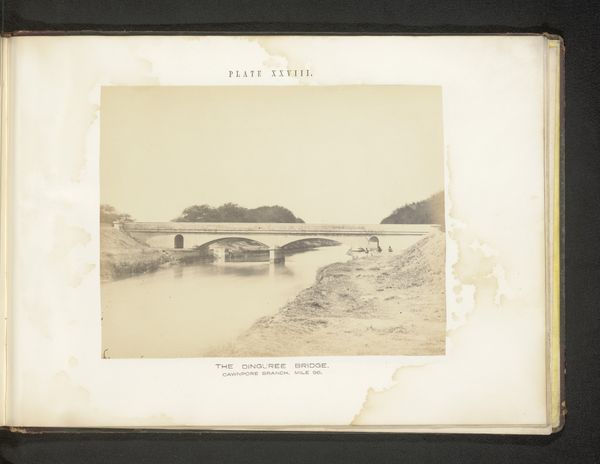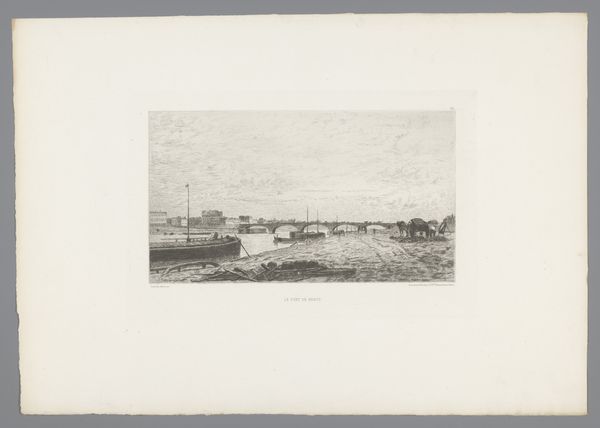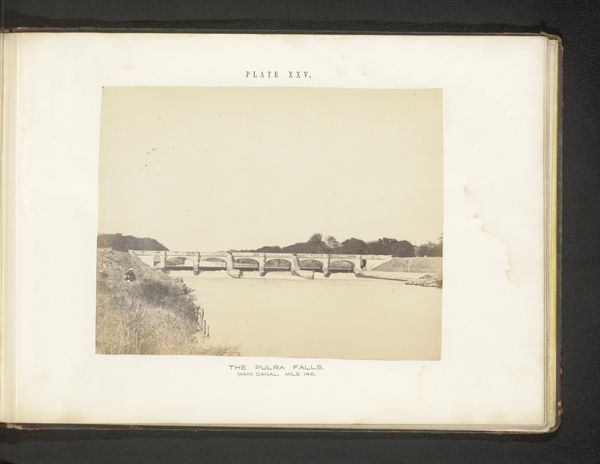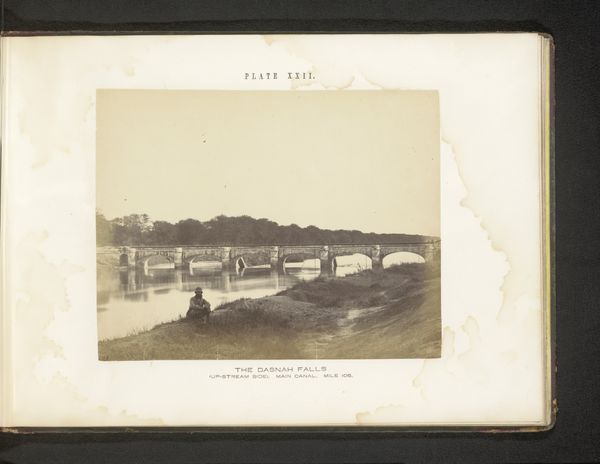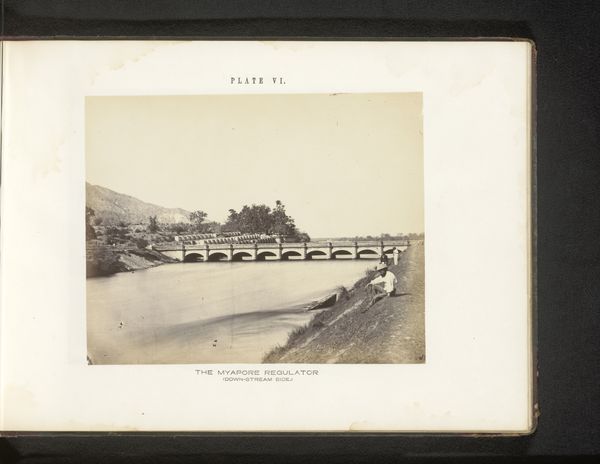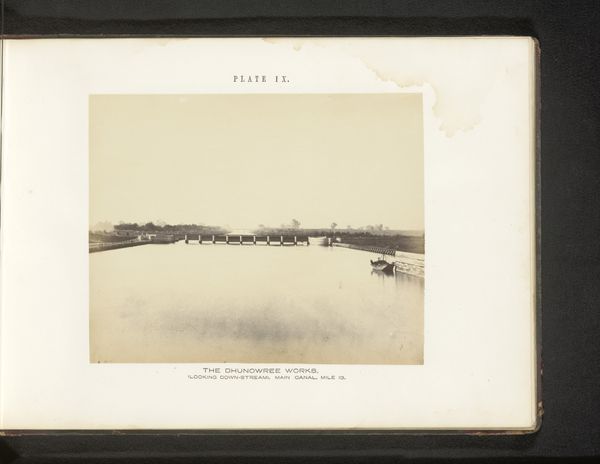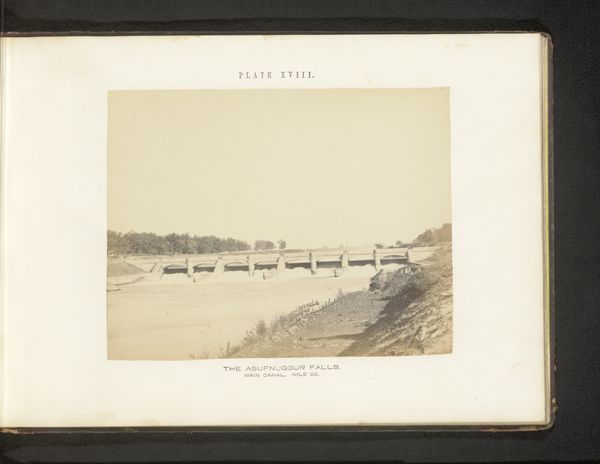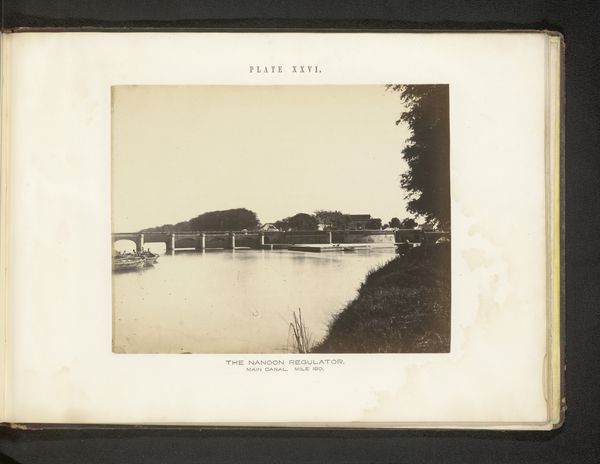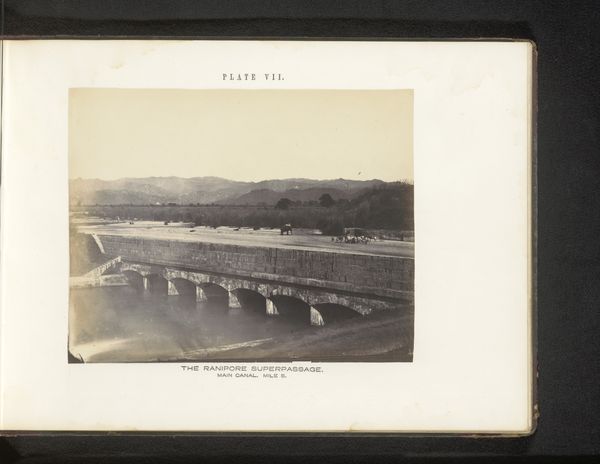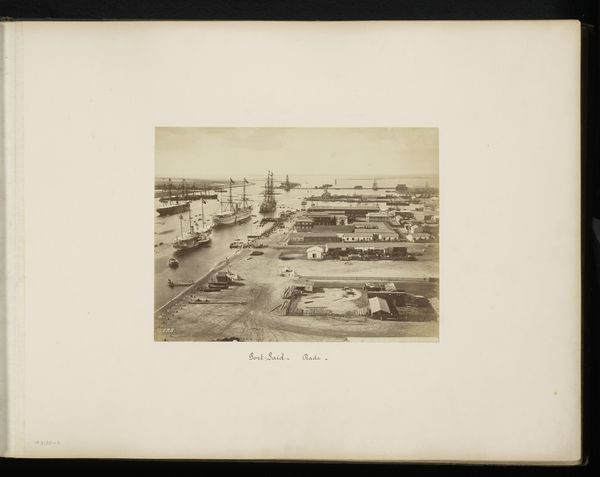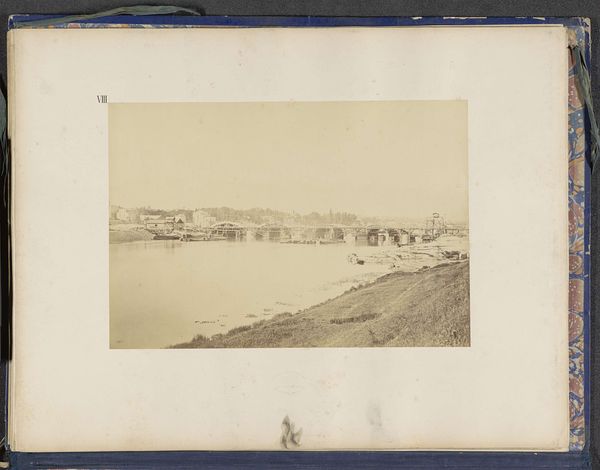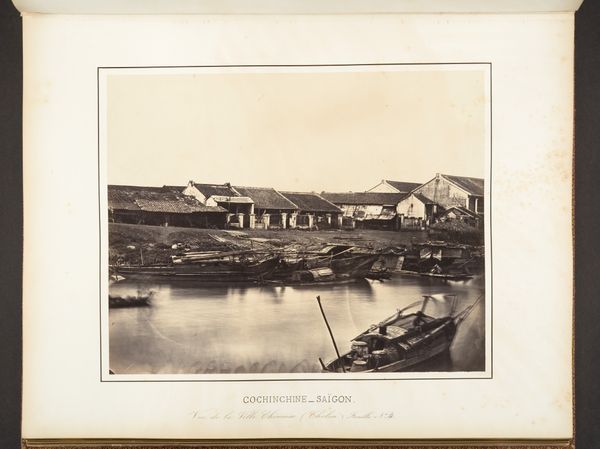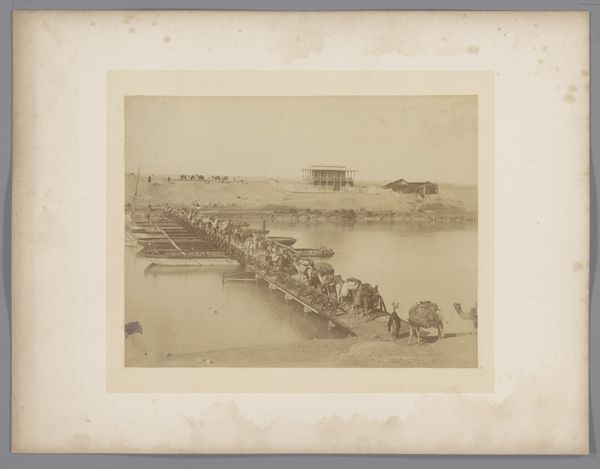
print, photography
# print
#
landscape
#
river
#
photography
#
personal sketchbook
#
watercolor
Dimensions: height 184 mm, width 232 mm
Copyright: Rijks Museum: Open Domain
Editor: So, this is "Twee onbekende mannen bij een brug over de Ganges," or "Two unknown men by a bridge over the Ganges," created before 1867 by Thomas George Glover. It’s a photograph, and honestly, it gives me a very still and almost… melancholic feeling. What do you see in this piece, particularly when thinking about its historical context? Curator: This image, while seemingly a simple landscape, speaks volumes about the intersection of colonialism, technology, and representation. The Ganges, a river of immense cultural and spiritual significance in India, is here documented with a stark, almost clinical gaze. This bridge is not just infrastructure; it's a symbol of colonial power asserting control over the land and resources. The two unknown men become marginal figures, existing on the periphery of this project of empire. How does their anonymity strike you? Editor: It makes me think about the power dynamics at play. They are present but unnamed, almost erased by the grand narrative of colonial progress represented by the bridge. Does the artist's choice of photography, as opposed to painting, influence how we should perceive it? Curator: Absolutely. Photography in the 19th century was often seen as an objective truth, lending a veneer of scientific legitimacy to colonial endeavors. Glover, through his lens, participates in this project, documenting the “progress” while simultaneously obscuring the human cost. We should question this supposed objectivity and consider whose stories are not being told. Are we seeing the complete picture, or just a carefully constructed narrative? Editor: It’s unsettling to realize the layers of interpretation hidden beneath what initially appears to be just a landscape. Curator: Exactly. By engaging with these complexities, we can begin to deconstruct the dominant narratives and acknowledge the diverse experiences that shape our understanding of history. This piece prompts us to consider how photography can be both a tool of documentation and a vehicle for ideological control. Editor: I will definitely remember to look past the aesthetic impression and dig for historical context in the future. Thank you.
Comments
No comments
Be the first to comment and join the conversation on the ultimate creative platform.
